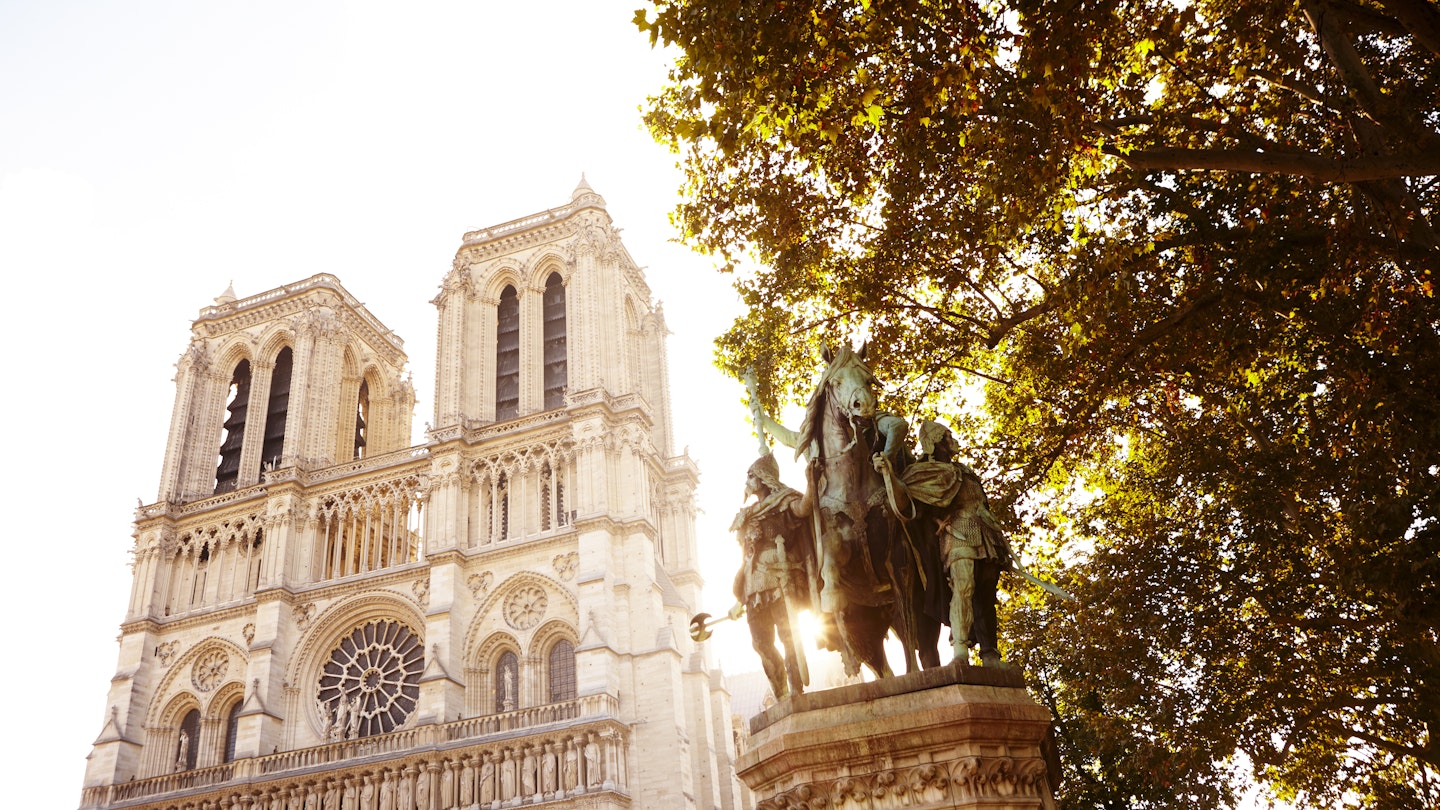Five Amazing Facts About Notre Dame Cathedral’s Restoration
Recently, the iconic Cathédrale Notre Dame de Paris reached a milestone in its renovation, after 200 tons of scaffolding was removed from the damaged landmark following the fire in April 2019. The subject of a new PBS science series, NOVA, a one-hour special called Saving Notre Dame, was unveiled recently, exploring the deep history of the site as well as the herculean task of renovating it.
1. The Restoration Team Must Wear Full Hazard Protective Gear
The workers on site wear a uniform consisting of full protective gear. After they finish, they must strip and shower down each time they leave the structure. This practice is not due to COVID-19; instead, it is because of the toxic lead dust that was spread across the site as a result of the fire. The fire melted a reported 440 tonnes of lead inside the 850-year-old roof, leading to the spread of toxic debris. Consequently, clean-up was halted while air quality and toxic dust were addressed.
2. Glass Specialists Used Cotton Swabs and Water to Remove Toxic Lead from Stained Glass Windows
The documentary Saving Notre Dame features Claudine Loisel, a glass scientist tasked with restoring the celebrated stained glass that the cathedral is famed for. While the glass masterpieces remain intact following the fire, they were subject to ‘thermal shock,’ forming micro-cracks in some panels. Furthermore, they were also showered with toxic dust, necessitating a decontamination plan that involved a precision vacuum cleaner followed by the painstaking application of distilled water using simple cotton balls to remove any residue. To ensure the safety of this process, the team invented a novel use of x-ray spectroscopy to determine the exact number of gentle wipes required to lift the lead off the glass, without damaging the paint.

3. 550 Tonnes of Mangled, Unstable Scaffolding Has Towered Over the Restoration Site
Approximately 550 tonnes of scaffolding has been on location at the site, with these metal structures being in place prior to the fire for scheduled restoration work. The extreme heat caused the scaffolding to melt, twist, and fuse with the building, resulting in significant challenges for the renovation team. While recent reports indicate that 200 tonnes has been removed, the team has had to navigate unstable conditions and even abandon the site when winds become too strong.
4. Geologists Sourced Limestone Beneath Paris for Restoration
While there was talk early on of updates to the plans for Notre Dame Cathedral—including a rooftop garden and a modern spire—it was subsequently announced that the landmark would be reinstated to its original appearance before the fire. To achieve this, the restoration team has gone to great lengths to locate the correct materials. Experts must identify limestone that is congruent with the centuries-old blocks already intricately positioned in the cathedral. Geologist Lise Leroux studied the stone’s origins, leading her to quarries beneath Paris, commonly known as the Catacombs. Here, she has managed to match micro-fossils found with samples from the vaulted stones of the cathedral, aiding in the sourcing of the limestone needed for the restoration.

5. A 3D Digital Twin of the Cathedral is Under Construction
The renovation of the cathedral has embraced innovative technologies, including the creation of a 3D digital map of the structure. Although no original plans survive, Rémi Fromont had fortuitously created a 3D scan of the complex roofing structure back in 2014. This now promises to provide the vital data needed for restoration, ensuring the cathedral is brought back to its original state. Moreover, a system is underway to create a 3D digital twin of the cathedral to safeguard against future risks.
For additional information on Saving Notre Dame, check the official NOVA website.




